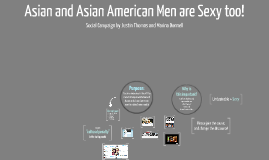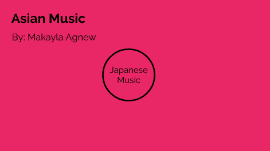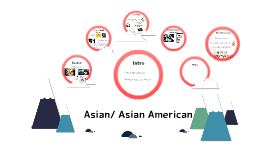Asian Music Powerpoint
Transcript: By: Makayla Agnew Asian Music Japanese Music Japanese Music The music of Japan includes a wide array of performers in distinct styles both traditional and modern. The word for music in Japanese is 音楽 ongaku. Traditional Japanese music is quite different from Western music as it is often based on the intervals of human breathing rather than mathematical timing. A modern popular Japanese song is "Likey" by TWICE. https://www.youtube.com/watch?v=V2hlQkVJZhE Most Chinese music is in pentatonic scale, which is from the Lun Chinese Legend, which states the belief that the five tone scale system is connected to their lives. Music in China is mostly high pitched and nasaly. The rhtm of many pieces of chinese music is in duple rythm. Music example: https://www.youtube.com/watch?v=1WGa3kawx7k Chinese Music Chinese Music The music of India includes multiple varieties of Indian classical music, folk music, filmi and Indian pop.. An example of modern Indian music is "India Waale". https://www.youtube.com/watch?v=X-DDknSzELI Indian Music Indian Music Koto- a traditional Japanese stringed musical instrument that has 13 strings. Shakuhachi- The shakuhachi is a Japanese end-blown flute. `Erhu- The erhu is a two-stringed bowed musical instrument, more specifically a spike fiddle, Sitar- a stringed instrument of the lute family that is popular in northern India, Pakistan, and Bangladesh. Typically measuring about 4 feet in length, the sitar has a deep pear-shaped gourd body; a long, wide, hollow wooden neck; both front and side tuning pegs; and 20 arched movable frets. A sitar can have 18, 19, 20, or 21 strings. Six or seven of these are played strings which run over curved, raised frets, and the remainder are sympathetic strings Instruments Used in Asian Music Instruments Used in Asian Music

















